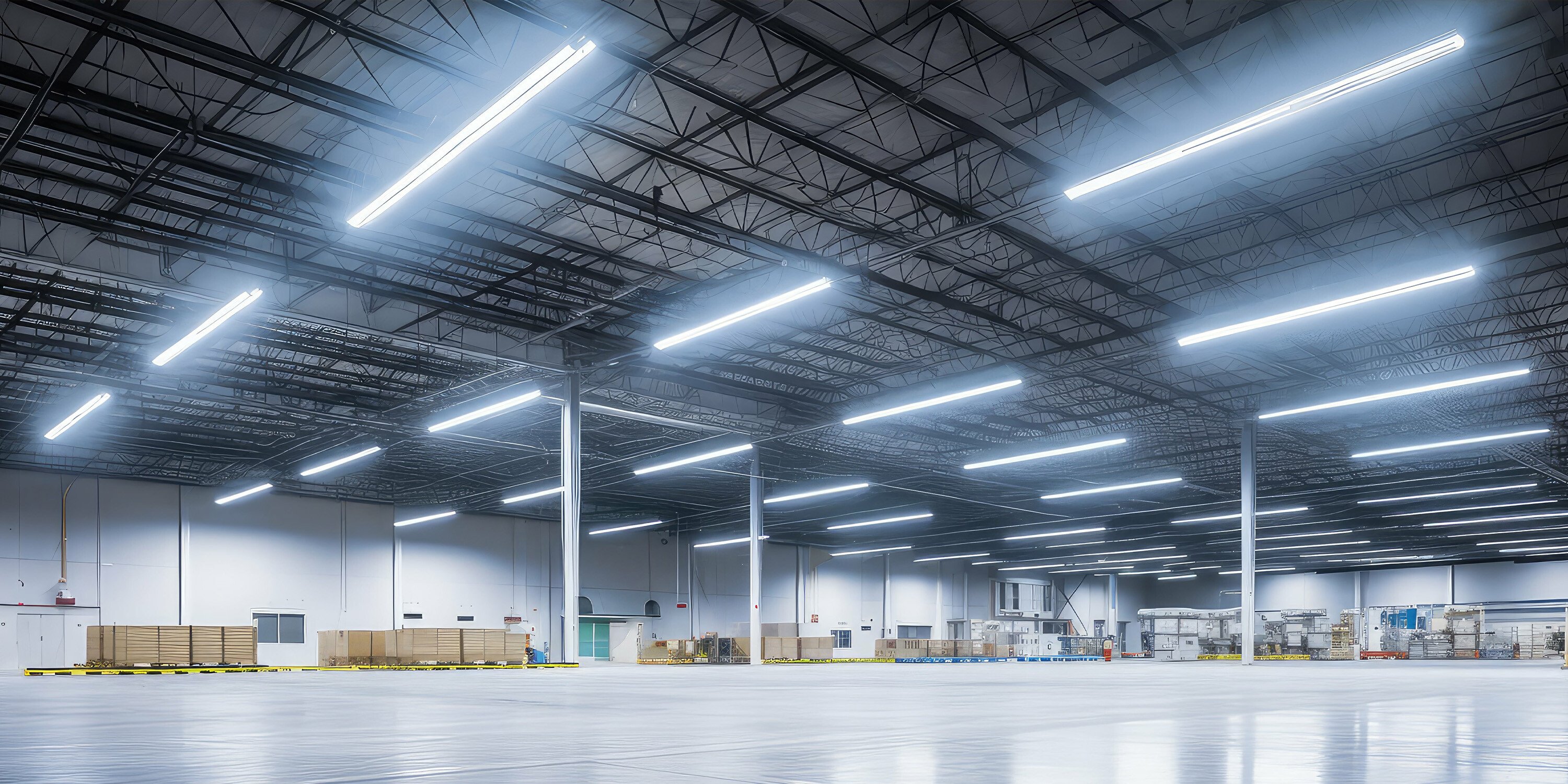Energy Efficiency | February 3, 2025
Energy Assessments: Key Insights for Unlocking Efficiencies
Fulfilling your business’ energy efficiency goals is like planning a big trip. There are various steps, routes, and methods to reach the end destination, but some may be better suited to your situation than others. Both endeavors begin with a key question leading the rest of the planning: “Where am I right now?” Regarding your energy efficiency strategy, an energy assessment will answer that question.
This article will provide an overview of what a commercial energy assessment constitutes, the common types that are utilized, and Mantis’ unique approach to these assessments that creates a roadmap to achieving efficiency goals.
What is an Energy Assessment?
An energy assessment (sometimes called an energy audit) is a comprehensive evaluation of a building's energy use to identify opportunities to improve efficiency and reduce costs.
Energy assessments can provide several benefits to your company and we tailor our approach to the desired client objectives:
- Cost Savings: By identifying and implementing energy-saving measures, businesses can significantly reduce their utility bills.
- Improved Building Performance: Enhancing energy efficiency can lead to better indoor comfort and overall building performance.
- Regulatory Compliance: Energy assessments can ensure that buildings meet local and national energy efficiency standards and regulations.
- Improved Maintenance and Repairs Planning: Energy assessments help businesses plan maintenance and repairs more effectively by identifying potential issues early, reducing unexpected downtime, and extending the life of equipment.
The 3 Levels of Energy Assessments
The American Society of Heating, Refrigerating, and Air-Conditioning Engineers (ASHRAE) outlines three levels of energy assessments. Each ascending level of energy assessment carries a higher degree of detail in their analysis. Understanding these levels can help businesses choose the right type of assessment to meet their specific needs and goals.
As described above and at length below, there are industry standard approaches and terms used. However, these standards are sometimes not the best fit for Mantis clients, so we often modify the approach. We might borrow from other standards such as the ASTM Standard for Facility Condition Assessments and standards for Retro-Commissioning. The point is that we cater our assessments to meet the needs of our clients using the best approaches available.
Level 1 – Walkthrough Analysis
A Level 1 energy assessment, also known as a Walkthrough Analysis, is the most basic form of energy evaluation. This initial assessment involves a brief review of the building's energy bills and a simple walkthrough of the facility to identify obvious areas of energy waste or inefficiency. The primary goal of a Level 1 assessment is to provide a preliminary understanding of potential energy-saving opportunities and to prioritize further, more detailed assessments.
During a Level 1 assessment, the energy auditor will:
- Review historical energy consumption data.
- Conduct a visual inspection of the building and its systems.
- Identify low-cost or no-cost energy-saving measures.
- Provide a rough estimate of potential energy savings.
This level of assessment is ideal for businesses looking to get a quick overview of their energy use and identify immediate, easy-to-implement improvements.
Level 2 – Energy Survey and Analysis
A Level 2 energy assessment, or Energy Survey and Analysis, offers a more detailed examination of a building's energy use. This assessment includes a thorough review of energy bills, a detailed building survey, and an in-depth analysis of energy consumption patterns. The goal of a Level 2 assessment is to provide a comprehensive evaluation of energy-saving opportunities, including both low-cost measures and more significant investments.
During a Level 2 assessment, the energy auditor will:
- Analyze historical energy consumption and demand data.
- Conduct a detailed survey of the building's systems and operations.
- Identify and evaluate energy efficiency measures (EEMs).
- Estimate the energy savings, implementation costs, and payback periods for each EEM.
- Provide a detailed report with actionable recommendations.
This level of assessment is suitable for businesses that are ready to invest in energy efficiency improvements and need a clear roadmap for implementation.
For most, Level 2 assessments fit best because they provide a detailed roadmap for energy efficiency without the extensive time and resources required for a Level 3 assessment. They serve as a precursor to more detailed analyses, ensuring businesses can make informed decisions about potential major capital investments. If significant upgrades or retrofits are viable, the insights gained from a Level 2 assessment can guide the more detailed and extended process of a Level 3 assessment.
Level 3 – Detail Analysis of Capital-Intensive Modifications
A Level 3 energy assessment, also known as a Detailed Analysis of Capital-Intensive Modifications, is the most comprehensive and detailed type of energy evaluation. This assessment involves a rigorous analysis of energy use, including advanced energy modeling and simulation. The goal of a Level 3 assessment is to provide a detailed financial analysis of major capital investments in energy efficiency, such as equipment upgrades or building retrofits.
During a Level 3 assessment, the energy auditor will:
- Perform detailed energy modeling and simulation.
- Conduct in-depth analysis of building systems and operations.
- Evaluate the technical and economic feasibility of major energy efficiency projects.
- Provide detailed cost-benefit analysis and financial projections.
- Develop a comprehensive implementation plan for capital-intensive modifications.
This level of assessment is an investment-grade analysis. It is ideal for businesses planning significant investments in energy efficiency and seeking to understand these projects' long-term financial and operational impacts.
How energy assessments are performed
Energy assessments are thorough and tailored to each client's unique needs. At their core, energy assessments start with understanding where the client is with their approach to energy, ideally from their own team, if possible. We recognize that assessments are often never acted on because they don’t align with the client's priorities and do not provide a clear path to implementation.
Here's an overview of the process:
Initial Consultation and Data Collection
The process typically starts with a kickoff call to introduce the teams and understand the client’s goals for their facility. During this call, 12 to 24 months of energy and water use data, utility bills, HVAC equipment inventories, and any past building evaluations are requested. This data helps the auditor to get to know the building even before arriving on-site.
On-Site Inspection
The site visit typically spans one day, though larger or more complex buildings may require additional time. The day is divided into three parts:
- Client Meeting: Discuss the entire building, ensuring alignment on goals and diving deep into maintenance practices and ongoing projects.
- Facility Walkthrough: Inspect every nook and cranny, from mechanical closets to the roof, asking about each piece of equipment and its use.
- Regroup and Review: Discuss observations and potential opportunities, collecting any missing data before concluding the visit.
Technical Analysis
The collected data is then analyzed to create energy profiles, perform energy allocations, and calculate savings and implementation costs for each identified measure. Follow-up meetings ensure the process is on the right track.
Reporting and Recommendations
Findings and recommendations are presented, focusing on actionable steps rather than just delivering a report. This collaborative approach ensures the client is fully informed and ready to proceed.
Timeline
A typical Level 2 assessment takes about a month and involves several weeks of detailed work and client interactions.
The Mantis Approach to Energy Assessments
At Mantis Innovation, we hold fast that your energy savings approach is not a bullet; it's a shotgun effect. It is a combination of many large and small efforts that can lead to substantial savings, with energy assessments as the first pivotal step.
We view assessments as tools that can be used to develop long-term relationships with owners by helping them discover the abundance of value just out of their sight. For instance, where some building owners and operators just want an assessment for a one-off requisite, we’ve utilized them to uncover no- and low-cost opportunities, such as upgrading lighting fixtures or recalibrating a building’s BAS, that are both immediately beneficial and build their trust in our more complex capabilities. Also, those no- and low-cost opportunities can help build momentum to the larger longer payback opportunities.
A launchpad for your facility’s energy efficiency
Energy assessments are the starting point for strategically addressing your portfolio's long-term energy efficiency projects. They provide a relevant, up-to-date picture of your facility's usage, helping you guide, plan, and execute the next steps in your efficiency strategy. While assessments can fulfill short-term goals like compliance requirements, they also offer a compounding opportunity to build a robust strategy.
Here are some specific energy efficiency measures that an assessment might uncover, listed in ascending order of severity and complexity:
- LED Lighting Upgrades: Replacing traditional lighting with LED fixtures can significantly reduce energy consumption and maintenance costs while improving lighting quality.
- Building Automation Systems (BAS): Implementing or upgrading BAS to better control lighting, HVAC, and other systems can lead to more efficient energy use and improved building performance.
- HVAC System Optimization: Adjusting temperature setpoints, scheduling regular maintenance, and ensuring proper calibration of HVAC systems can improve efficiency and reduce energy costs.
- Building Envelope Improvements: Adding or upgrading insulation, sealing leaks, and improving the building envelope can reduce heating and cooling loads, leading to lower energy bills and increased comfort.
- HVAC Equipment Upgrades: Replacing outdated HVAC systems, boilers, chillers, and other energy-intensive equipment with high-efficiency models can result in substantial energy savings and improved reliability.
- Solar Energy Integration: Installing solar panels or other renewable energy systems can significantly reduce reliance on grid electricity and lower long-term energy costs. These projects require a higher initial investment but offer substantial long-term benefits.
By identifying these opportunities, an energy assessment provides a clear roadmap for both immediate improvements and long-term strategic enhancements. This comprehensive approach ensures that your energy efficiency efforts are well-informed and strategically aligned, setting the stage for sustained success.
In conclusion
An energy assessment is a crucial first step in developing a long-term energy efficiency strategy for your facility. By identifying opportunities for improvement and providing a detailed roadmap, energy assessments help you achieve significant cost savings, enhanced building performance, and sustainability goals.
You don't have to navigate this process alone. Bringing in a trusted consultant ensures a timely and efficient assessment, leveraging their expertise to guide you through each step.
Take the first step towards a sustainable, efficient future for your facility. Contact us today to schedule your energy assessment and start unlocking your facilities' full potential.
Related Posts
Discover more content and insights from Mantis Innovation

The Cost of Inaction: Why Businesses Should Act Now on Energy Efficiency
In today's fast-paced business environment, the financial and operational losses businesses incur by delaying energy efficiency improvements, the "cost of inaction," is more relevant than ever.

In today’s AI era, human intelligence is the key to data center facility and energy optimization
Nowhere else in modern industry do artificial and human intelligence converge with such transformative potential as in the world of data centers. As AI's extraordinary growth accelerates demand for

Your Guide to LED Lighting for Business and Commercial Buildings
Never to be underestimated, LED lighting and well-designed lighting retrofits and upgrades offer businesses big improvements like reduced energy costs, reduced emissions, and improved working

Power Shift: Energy Insights Post-Election
A new president has been elected, and while conversations are swirling about tariffs and drawbacks in sustainability initiatives, it is important to understand what effects the administration change